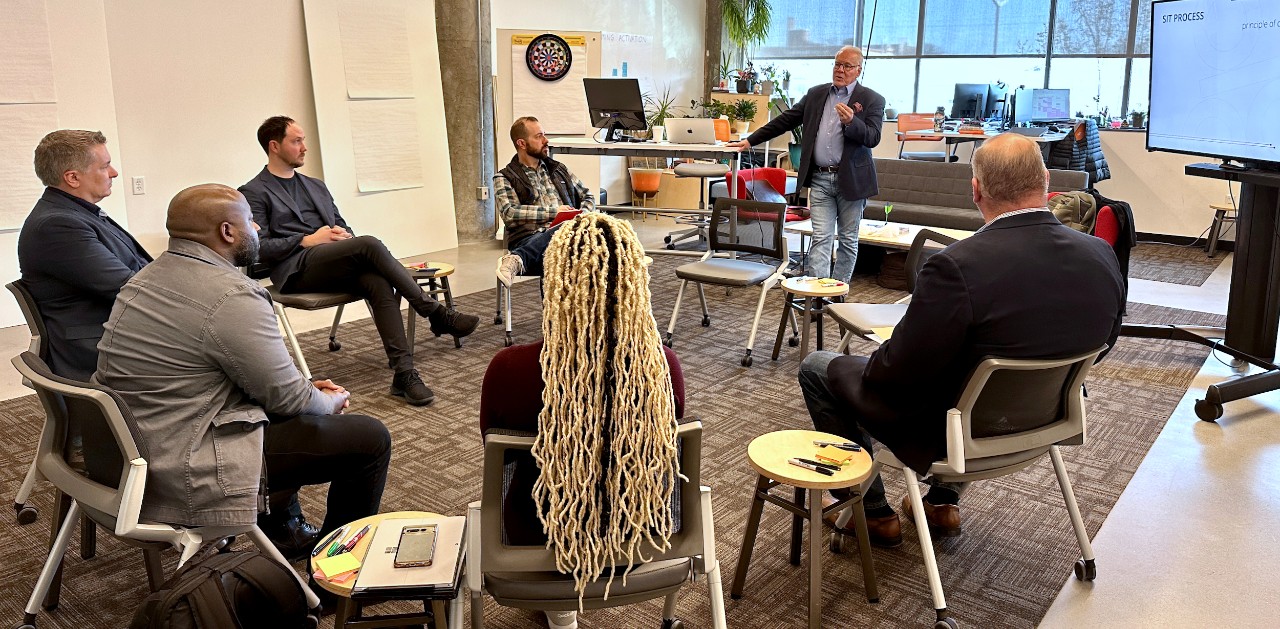In a world where chaos often dictates problem-solving, the 1819 Learning Lab at the University of Cincinnati is rewriting the rules.
Business leaders are no longer shying away from complexity; instead, they are embracing it, thanks to a unique, interactive research-based methodology workshop that marries systematic inventive thinking (SIT) with the power of artificial intelligence (AI).
Top innovators from Fifth Third Bank, marketing faculty from UC's Carl H. Lindner College of Business and the expertise of Matt Sias from InnovationAcceleration.ai all gathered for a progressive pilot SIT+AI prototype workshop in UC's 1819 Learning Lab.
Drew Boyd, maestro of SIT and a marketing professor at UC's Lindner College of Business, unraveled the mystery behind SIT's creative problem-solving strategy, "It's all about systematically applying thinking patterns to existing products, services or processes, challenging assumptions and shattering mental models to birth innovative solutions."
Using a temperature-indicating color-changing baby bottle as an example, Boyd demonstrated how employing SIT strategies, such as the solution-to-problem process, considered contrary to common beliefs about innovation, can spark novel ideas by questioning the fundamental principles underpinning them.

UC's 1819 Learning Lab leaders, Fifth Third business leaders and AI tech leaders create ground-breaking problem-solving strategies with Drew Boyd, (standing) UC marketing professor and founder of the SIT program, during UC's SIT+AI pilot prototype workshop in the 1819 Learning Lab. Photo/provided
- Subtraction: Removing a component or feature from a product or system to create something new.
- Division: Dividing a product or its components and rearranging them in a novel way.
- Multiplication: Copying a component and altering it in some way to create variety or added functionality.
- Task unification: Assigning a new task to an existing component in a system.
- Attribute dependency: Creating dependencies between system attributes of a system to generate innovative solutions.
Sias, facilitating the AI side of the workshop, emphasized the benefits of leveraging AI to accelerate the process of generating and refining ideas by merging them it with the SIT framework. "Together, we're making significant strides in augmenting and accelerating human creativity and innovation combining SIT with the speed of AI."
- Data-driven insights: AI analyzes vast data instantly, revealing patterns and areas for improvement. SIT then transforms these insights into creative ideas.
- Human-AI collaboration: Combining AI's analytical prowess with human creativity yields holistic and effective problem solving. AI aids ideation, while humans contribute intuition, empathy and creativity.
- Cross-industry collaboration: Unveiling closed worlds that might otherwise remain hidden fosters opportunities for innovation.






